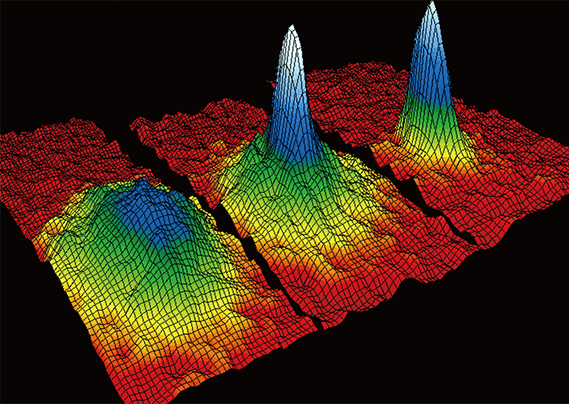주메뉴
- About IBS 연구원소개
-
Research Centers
연구단소개
- Research Outcomes
- Mathematics
- Physics
- Center for Theoretical Physics of the Universe(Particle Theory and Cosmology Group)
- Center for Theoretical Physics of the Universe(Cosmology, Gravity and Astroparticle Physics Group)
- Center for Exotic Nuclear Studies
- Center for Artificial Low Dimensional Electronic Systems
- Center for Underground Physics
- Center for Axion and Precision Physics Research
- Center for Theoretical Physics of Complex Systems
- Center for Quantum Nanoscience
- Center for Van der Waals Quantum Solids
- Chemistry
- Life Sciences
- Earth Science
- Interdisciplinary
- Institutes
- Korea Virus Research Institute
- News Center 뉴스 센터
- Career 인재초빙
- Living in Korea IBS School-UST
- IBS School 윤리경영


주메뉴
- About IBS
-
Research Centers
- Research Outcomes
- Mathematics
- Physics
- Center for Theoretical Physics of the Universe(Particle Theory and Cosmology Group)
- Center for Theoretical Physics of the Universe(Cosmology, Gravity and Astroparticle Physics Group)
- Center for Exotic Nuclear Studies
- Center for Artificial Low Dimensional Electronic Systems
- Center for Underground Physics
- Center for Axion and Precision Physics Research
- Center for Theoretical Physics of Complex Systems
- Center for Quantum Nanoscience
- Center for Van der Waals Quantum Solids
- Chemistry
- Life Sciences
- Earth Science
- Interdisciplinary
- Institutes
- Korea Virus Research Institute
- News Center
- Career
- Living in Korea
- IBS School
News Center
| Title | Something new emerges from the relationship between already known things | ||||
|---|---|---|---|---|---|
| Name | Department of Communications | Registration Date | 2015-08-08 | Hits | 2601 |
| att. |
 Suk-Bum-Chung.jpg
Suk-Bum-Chung.jpg
|
||||
|
Something new emerges from the relationship between already known thingsDr. Suk Bum Chung at the Center for Correlated Electron Systems The Institute for Basic Science (IBS) has the “YS (Young Scientist) program” for nurturing of young researchers. The program will not only receive research funding but also organizing independent research groups at the IBS. As a result, these young scientists will have the opportunity to gain practical experience running a research lab. To facilitate their development, world-renowned scientists take part in the program as mentors. This program is also supported by the IBS’s state-of-the-art infrastructure and research support system. We’ve met with Dr. Chung who was selected as the first such scientist at this lab. Seeing the wholeDr. Chung’s research field is condensed matter physics. This field is not familiar to many people but has a long history, as well as broad reach,tracing back to the origin of the field in the 19th century when British scientist Humphry Davy and Michael Faraday distinguished between conductor and insulator. In the beginning of the 20th century, the state of a solid was interpreted from a quantum mechanical perspective. This research stream, coined solid state physics, had many achievements. As the field developed, U.S. physicist Philip Warren Anderson began to use the term “condensed matter physics”. In 1978, the American Physical Society renamed their Solid State Physics Division to the Condensed Matter Physics Division. As implied by the term“condensed”, condensed matter physics deals with the macroscopic condition of a material consisting of a number of particles such as heat, elasticity, electricity, magnetics, and optics.
Condensed matter physics is one of the actively studied areas recently.This picture took in 1995 isa 3-dimensional snapshot of rubidium atoms acting as a single atom due to the Bose-Einstein condensate at extremely low temperatures. This does not mean, however, that conventional particle physics takes the opposite side of condensed matter physics. Their relationship can be considered complementary. As stated, while particle physics separates particles one by one,condensed matter physics deals with phenomena caused by the interaction between particles. Usually, condensed matter physics deals with phenomena that cannot occur at the ground state of particle physics. For this reason, condensed matter physics is thought to cover those areas that cannot be easily studied by particle physics. Following a traceDr. Chung’s main research topic is the Majorana fermion. The Majorana fermion is known as “the particle that becomes anti-particle of their own.”This concept was introduced by Italian physicist Ettore Majorana in 1937 when he established the theory of the neutrino. Because the Majorana fermion is the key to the study of dark matter,physicists have struggled to directly identify it.What in the Majorana fermion study attracted Dr. Chung to the study of condensed matter physics? Culture differences in approach“I have been asked a lot about the differences between the domestic and international research environments. I think there is difference in the approach rather than the level of achievement.Let me give you an example. Assuming research institutions are assigned to study a sphere and a donut. Most domestic researchers at the institutions will first check if there is a hole in the center of both the sphere and the donut. On the contrary, most researchers at overseas institutions study the subjects based on basic theories, such as a topological differences. The findings of domestic and international groups are the same but the starting points are different. This is the difference between checking the entire part before applying theory and checking each result before analyzing specific differences. I think that harmony between the approaches would be ideal.” |
|||||
| Next | |
|---|---|
| before |
- Content Manager
- Public Relations Team : Suh, William Insang 042-878-8137
- Last Update 2023-11-28 14:20












